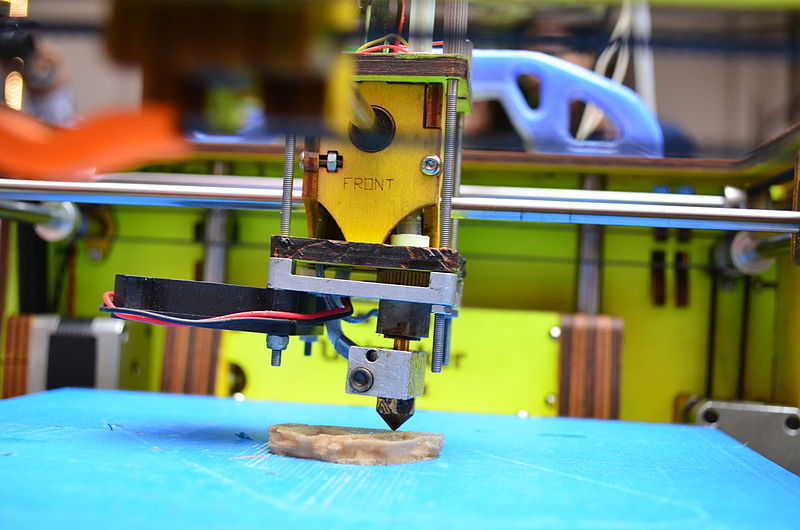Where Will 3D Printers be in the Next 10 Years?

Imagine needing an emergency heart transplant. Imagine buying an engagement ring. Imagine cooking dinner. In 10 years time, 3D printers may be the answer to all of those situations.
When we look into the backbones of our modern society, we see the healthcare industry, food industry production, and the leisure industry all playing key roles in our everyday lives. In case you haven’t realized it yet, 3D printing is poised to become the answer to many current problems, far beyond simply being a nifty production tool. Focusing in on specific industries that 3D printing will directly influence, let’s look first at the healthcare field.
For years, joint replacement surgery meant using a stock ball and joint metal mechanism that, while likely top of the line, was a retrofit to the patient’s anatomy. While bone and hip replacements have been life changing, previous technology is nothing like what is now possible with 3D printing. Instead of having to retrofit a metal joint, 3D printing allows custom joints to be printed and developed from scans of the patient. Not only this, but the joint material doesn’t need to be solid anymore. Through the use of latticing and generative design, designers and doctors can nearly replicate the characteristics of bone joints through 3D printed mechanisms.
So, 3D printed joints and to a greater extent, limbs… but, we’ve all heard about things like this already, right? As these applications may currently be in a deeper level of development, the future of 3D printing in medical industries will look even more so like science fiction. Instead of printing joints, imagine printing organs. Living breathing organs. Dr. Frankenstein surely would’ve appreciated this technology when he was creating his monster. Through innovative biomedical advances, printing with living breathing tissue will soon become possible. In fact, it’s already being done. Like this report from the BBC of doctors 3D printing a living breathing (well, maybe not breathing) ear for a patient.
If the advances in the medical industry due to additive manufacturing don’t have your jaw on the ground yet, get ready for fully integrated products and generated machines. Let me help you decipher exactly what I meant by that. Looking at product design, we can see how external shells are often created to house electronic circuits, motors, and otherwise the components needed to make a product work. But you see, 3D printing doesn’t follow the rules of traditional product design. Integrated plastic and metal 3D printers are already being created , and through a little refinement, we can print products that are embed with electronics and interconnectivity from the get go. Take, for example, that Bluetooth speaker you surely have nearby. Instead of having to print the casing and assemble the speakers and everything else needed to create it, imaging pulling a completed speaker right off the printer bed of your desktop 3D printer. Not to sensationalize, but the primitive relatives of this technology already exist today. With much of the manufacturing world’s focus on additive, we will likely see fully integrated and connected products 3D printed in one run during our lifetime, if not in the next 10 years.
I don’t know about you, but my jaw is slowly becoming unhinged from the amazing potential that 3D printing poses. Oh, no? You say you’re a realist and that none of this will ever happen? Okay, I know engineers are trained to be skeptical, after all, I am one, but these amazing advances aren’t that far off. Let’s take a look at some breathtaking 3D printing technologies that already exist to help you grasp just how far the industry will be in the next decade.
Using 3D printers and otherwise additive manufacturing techniques, we can create the following things:
- Pizza
- Cars
- Drones
- Other 3D printers
- Houses
- Circuits and computers
And this is only a brief list of what’s possible, not to mention what we have already discussed in this article. While 3D printing surely isn’t a “solve-all” technology, with the projected growth rate of the industry, 3D printing virtually anything you can imagine will soon be possible.
Sources: The Guardian , Smithsonian , Explaining the Future
The post Where Will 3D Printers be in the Next 10 Years? appeared first on Inventor Official Blog.
Industries


Sign Up to get our monthly news Letter
About Us
All Rights Reserved | Mitchell and Son Additive Manufacturing Ltd | Registered Company in England and Wales | Company Number : 12038697
| Public Liability Insurance no. 14615097
Insurer: AXA XL














